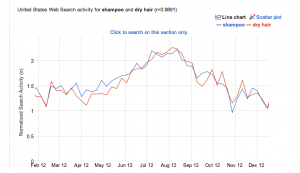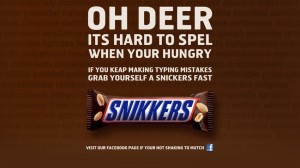In this post I would like to show you how to use Google Correlate to strengthen your brand.
Google Correlate is part of Google trends. It allows you to detect trends over time and space (countries). In winter months for example, mittens will clearly increase in searches. Thereby it shows search terms that most correlated to mittens, such as snow hats and waterproof gloves. So Google Correlate will look for matching patterns in your search volume.
Example. Let me take this into a case study. Image you work for the hair product company, Herbal Essences. The most important search term for you might then be “Shampoo”. When looking at for example The United States, one can see that the search term “shampoo” correlates most with “dry hair”. This might mean you want to pop up when searchers enter “shampoo dry hair” in their google search.
It is also interesting to see when people search for “shampoo” online. When entering “shampoo” in google correlate you will see a graph from 2005 till 2013 showing you an increase in search for “shampoo”. This is simply as people currently use the internet more. If you drag your mouse over a certain year however, you will be able to see the increases in search per month. In the year from 2012 to 2013 most people looked up the words “shampoo” and “dry hair” in summer. This might mean that you want to launch a campaign for shampoo against dry hair in the summer of 2014.




